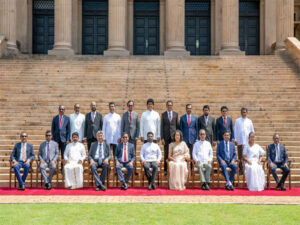
A view of the border fence outside the Kitton outpost on the border with Afghanistan in North Waziristan, Pakistan October 18, 2017. REUTERS/Caren Firouz
Islamabad [Pakistan], November 21 (ANI): Durand Line is a strategic concern for both Afghanistan and Pakistan, but the dispute over the region poses a major existential concern for Islamabad.
The Durand Line (the border established under British colonial rule and the Afghan King in 1893) divides the traditional Pashtun homelands in Afghanistan and Pakistan. Owing to the tribal, linguistic, social, and economic ties, the border was mainly porous until recently fenced and heavily guarded, reported International Forum for Rights and Security (IFFRAS).
Traditionally, Pashtunistan or the Pashtun homeland stretches from areas south of the Amu River in Afghanistan to west of the Indus River in modern-day Pakistan.
As the British prepared to exit India in 1947, Afghanistan demanded a revision of its international border to reclaim back its Pashtun lands. Its request was denied and to add to it, the setting up of Pakistan as a state was consolidated.
Subsequently, Afghanistan announced that all former Durand Line agreements, including the subsequent Anglo-Afghan treaties upholding it, were invalid because the party with whom the contract was signed – British India Administration, no longer existed, IFFRAS reported.
By supporting the Taliban and helping it seize control of Afghanistan, Pakistan hoped to intensify its strategic depth in the country and persuade the Taliban Government into legitimizing the Durand Line, the report said.
However, things seem to be turning out otherwise. Taliban has refused to give in to the pressure to recognize the Durand Line, reported IFFRAS.
Taliban spokesperson Zabihullah Mujahid in an interview with Ariana News commented on Islamabad’s interference saying, “I have to say 100 percent that we do not want anyone to interfere including Pakistan. We are an independent country. We do not accept these interventions. Pakistan is a separate country. We do not want to interfere in their affairs and they cannot interfere [in Afghanistan‘s affairs].”
Taliban has also stated their opposition to border fencing along the Durand Line, to which, Pakistan resorted to employing extreme measures such as imposing a blockade at the Chaman post in early October 2021 in addition to existing disruptions at the Torkham Post.
These two were major crossings for men and goods and also a major source of revenue for the bankrupt Taliban government as well as ordinary citizens on both sides of the border, reported IFFRAS.
In an event where the Durand line gets subsumed, Greater Afghanistan or very unlikely independent Pashtunistan would be carved out of Pakistan, expanding Afghanistan all the way to the Indus River and leaving Pakistan with just two provinces, Sindh and Punjab, thereby Pakistan may cease to exist as a state.
Therefore, the Durand Line is one of the main concerns for Pakistan but it has been hiding the real issue behind Kashmir cover. Kashmir may not pose as much an existential threat to the Pakistani state as is Durand Line, reported IFFRAS.
After losing much of its territory to Bangladesh after the 1971 War, Pakistan has been left with a small area with four provinces and a Federally Administered Tribal Area (FATA), which now is merged with the Kyber Pakhtunkhwa province as per information available on the Embassy of Pakistan to Sweden and Finland’s webpage. (ANI)



















